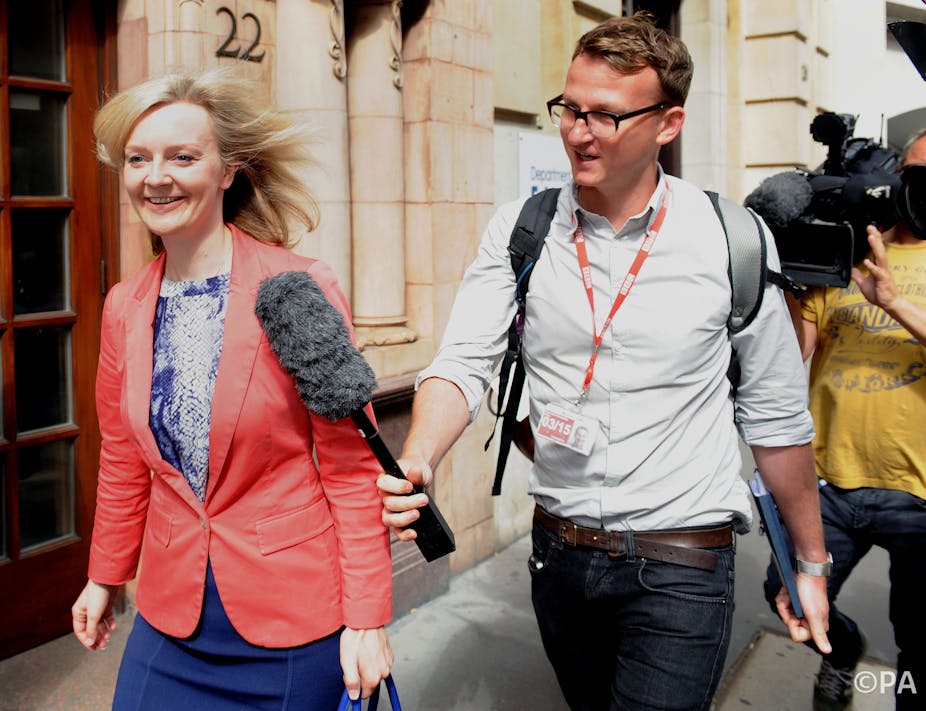The Conservatives clearly have a women problem: over the past four years the cabinet contained more ex-Etonians than it did females. Prime minister David Cameron recognised this and promised a “cull of the middle-aged white men” in the latest reshuffle.
The dust has now settled and Cameron was true to his word. The new cabinet includes four new female members, four women have been promoted to junior ministers, and the government features two new female whips. A few more women at the top table is certainly a welcome move. However it only goes part of the way towards addressing either the Tories’ woman problem, or the national problem of a lack of females in powerful roles.
Changes at the top mask a deeper problem. Women still make up just 23% of MPs. This means the UK ranks 65th out of 189 countries in terms of equal representation, immediately below Madagascar and just 11 places ahead of Saudi Arabia (20% women MPs).
The Conservatives (as well as the Liberal Democrats) have typically done much worse than Labour in appointing women candidates. The Tories did improve following the 2010 election, but the results were certainly nothing to boast about. This means there is a shallow stream of new female talent coming into the party.
There are many ways the party could address this issue. It previously had an “A list” for women and ethnic minority candidates. However, this was dropped in favour of voluntary lists. Yes, things such as better working hours and the introduction of a parliamentary creche have helped. But we are still some way off a truly inclusive working environment for MPs.
A recent report by All-Party Parliamentary Group on Women in Parliament suggested a range of measures to improve the situation. Recommendations include zero tolerance of unprofessional behaviour in parliament, a better balance of time spent in constituencies and in Westminster, establishing a women and equalities select committee, making the parliamentary calender more predictable, and improving the online gateway to parliament.
If these moves seem obvious that’s probably because they are: these are common practice in many workplaces. But MPs have traditionally operated in a world of their own.
If we were to see more women in parliament and, eventually, in cabinet, then clearly there are big questions about the impact of these raw numbers. Will simply introducing more females into the cabinet change things?
Having more women in cabinet is likely to lead to issues which are important to women being further up the political agenda. Yet commentators have pointed out that many of the females appointed to the cabinet have values and interests which might be considered as antithetical to the interests of women. So perhaps in this instance, the impact will be lessened.
However, the government’s opponents might take comfort in another piece of research. A systematic review of the literature shows that Conservative women tend to have more left-leaning economic policies than their male counterparts.
The big question now is how this more diverse cabinet will perform, not so much in terms of ideology but as a group able to take the best decisions. We know Conservative cabinets have traditionally been dominated by old white males; what now?
Evidence from studies of diverse groups suggest a more diverse cabinet is likely to have more conflict, take longer to come to a decision, but come up with better solutions. Also we should expect members of the cabinet to be less satisfied with the group process.
Research in the corporate sector suggests more diversity at the top will result in better performance on objective measures, but performance will be seen more negatively on subjective criteria. So with more women in cabinet the quality of policy is likely to be better, but the quality of media coverage is likely to be worse. Not the ideal scenario for David Cameron and his team in the run-up to an election.
As for the women in cabinet themselves, they won’t find it easy. Evidence from the US Senate suggests powerful men tend to speak more, while powerful women speak less. When powerful women do speak out, they are often punished with negative audience ratings.
Life is going to get tough if any new women cabinet members get angry. Angry men tend to be seen in a positive light, and their anger is blamed on the situation. In contrast, angry women are viewed negatively, and their anger is seen as a personal failing.
If we are interested in making our political sphere more equal, then we must go far beyond appointing a few additional women to the cabinet. It is vital that we reform how parties select their candidates, the working practices once in parliament, as well as the gendered dynamics within cabinet itself.

